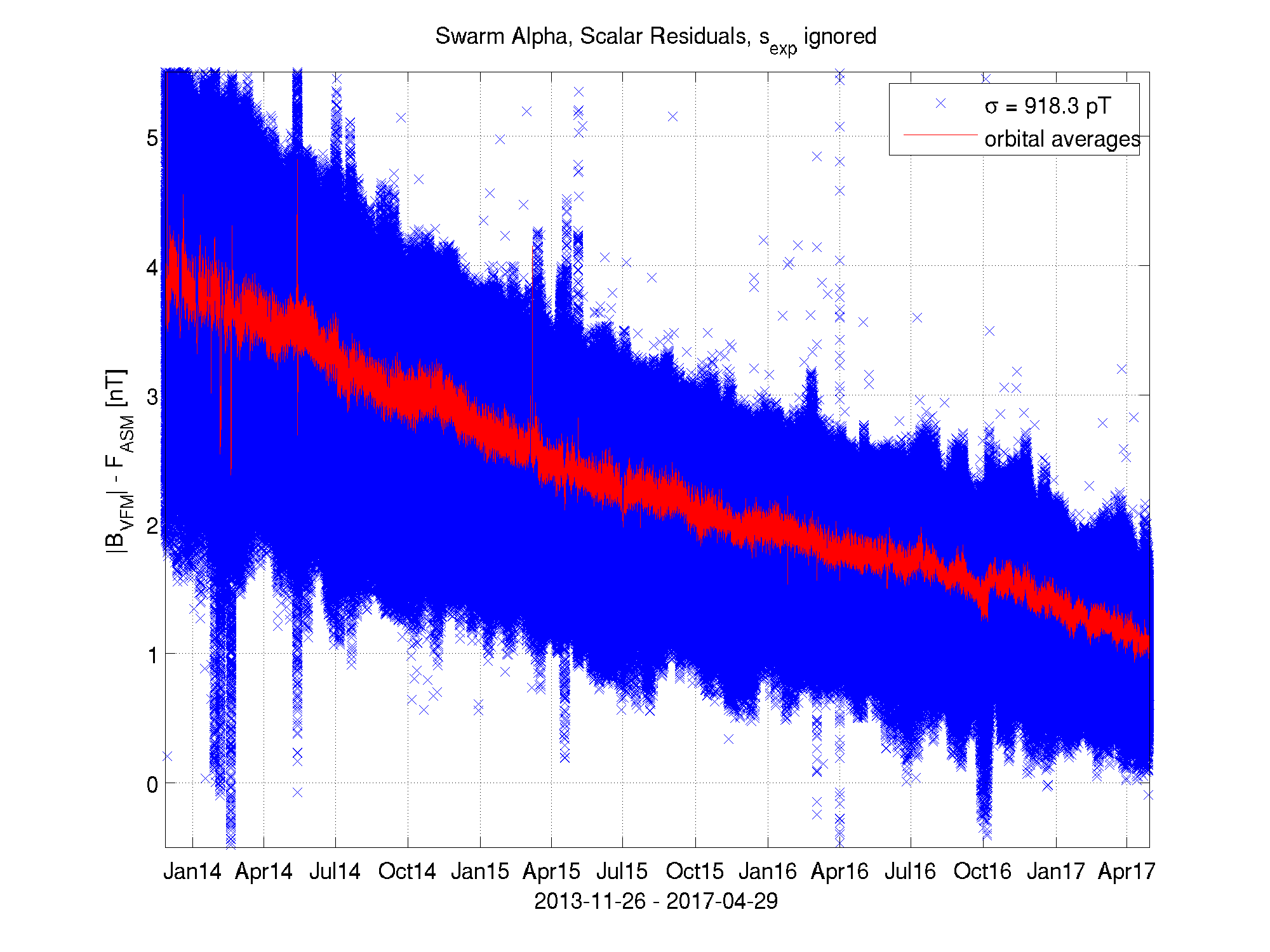
There are indications of a change in the behaviour of the magnotemetry package on Swarm in 2017. Applying the calibration and correction scheme which worked quite nicely with data up to the end of 2016, seem to perform less optimal when including data from 2017. The following plots show the magnetic scalar residuals for Swarm Alpha and Bravo after a full re-estimation of the calibration and correction scheme though ignoring the exponential saturation in time; these plots makes the anomalous behaviour in 2017 visible.
Note that these plots at the same time demonstrates the continued
validity of the emperic
In an attempt to characterise the affect seen in the 2017 data an additional scaling have been added to the calibration scheme: a three-component scaling of the VFM readings, linear in time and only applied on data after 2016. For Swarm Bravo, a moderate damping of the y-component of this scaling was required to avoid too large value estimations.
The scalar residual plots below demonstrate the successful correction of the 2017-behaviour by addition of this scaling. Interestingly, the estimated scaling coefficients are very similar for the two satellites, Alpha and Bravo:
| Alpha | Bravo | |
| s2017 [10-6/yr] |
-10.7 15.1 -72.3 |
-16.5 4.2 -72.0 |
| sexp [10-6] | 175.181 | 195.420 |
| tau [yr] |
2.5176 | 2.8920 |